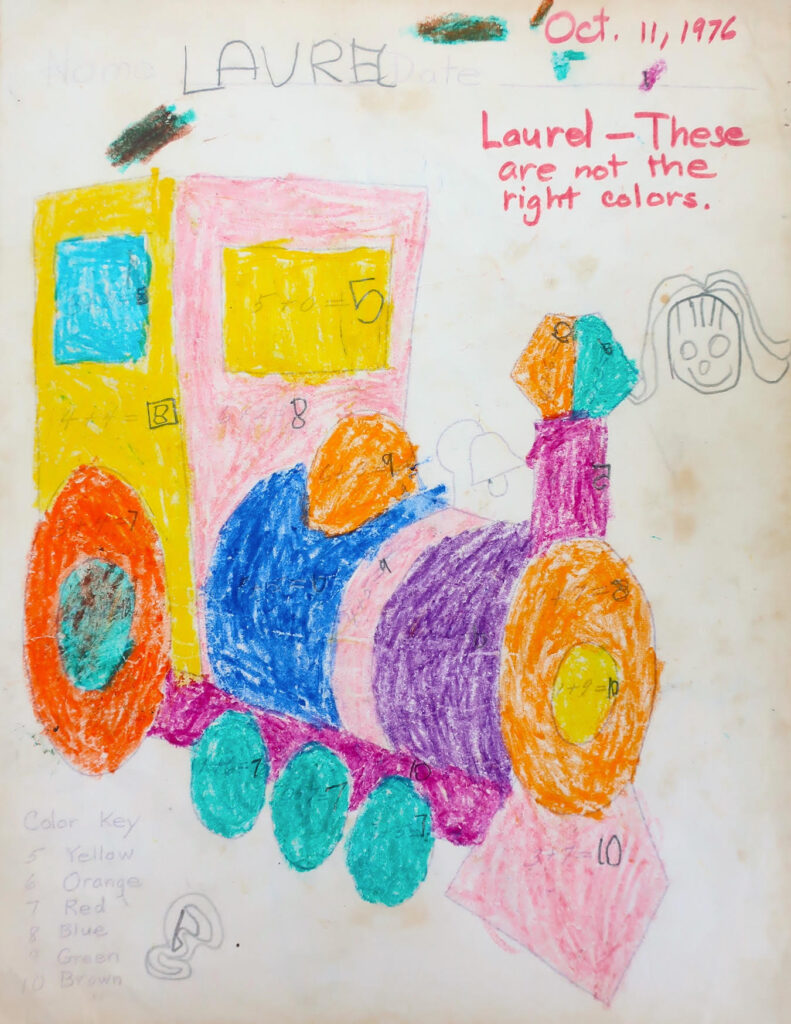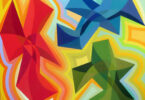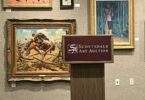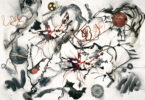
“When did you decide you were an artist?”
This deceptively simple question has led me to more and more questions and an easy answer is nowhere to
be found. My initial reaction to this seemingly benign question was one of shock, almost offense.
“Decide” implies making a conscious decision. That I had a choice in the matter, like what kind of soup I was going to make this week or what I was going to wear to work tomorrow. “My identity as an artist wasn’t a calculated decision, I was born this way, darn it, to not follow this path would surely go against the very essence of my gifted being. Not pursuing my art wasn’t even an option if I wanted to live an authentic, fulfilled existence.” On and on and on, the story unfolded in my indignant mind.
When the chatter in my brain chilled out a bit, I realized that this idea of the artist origin-story was one worth considering with a more open mind and loving heart. I started by tweaking the question. “When did I realize that I was an artist?” This shift in verb cracked open a window, and let in a breeze, filled my lungs with possibility. When did I realize I was an artist… and, when did my artistic nature emerge?
I suspect we all have moments in our childhoods that can be interpreted as evidence of burgeoning artist tendencies. Although my memories have been dulled by time and enhanced with a hearty use of creativity, I do have a vague recollection of being on the playground in 2nd or 3rd grade. I wasn’t playing dodge ball or running around like the other kids (perhaps the earliest evidence of my artist identity). Instead, I sat on a bench and used my idle time efficiently. There were red rocks that lined the periphery of the school yard, and I would collect piles of these rocks and grind them together, creating mini mountains of coarse red dust. The finer the dust the more successful that day’s lunch period was.
In retrospect, was this an act driven by the boredom of a low achieving, introverted kid, or was this a precursor to the women’s work by which my life would eventually be consumed? Like grinding pigments, sharpening pencils, or crushing grain, was I preparing my materials?
There are also many examples from my childhood that illustrate attempts to discourage the artist within from emerging. If you come to my house today and use the bathroom you will see a framed drawing, one of my very early works on paper, which will be displayed as evidence of my artist prowess when I have my first museum retrospective. When you see this drawing you will laugh, for you will have walked through an explosion of color and pattern before you reach the small lavender bathroom. The statement “these are not the right colors” written by my teacher has followed me throughout my life and career as an artist. They speak to my identity as bi-racial, straddling two cultures, and as an artist whose use of color has caused invisibility, the work being labeled as simplistic and childish.
As a teacher myself I wonder how hard it would have been for this teacher to see more in this drawing, more in me. How many other kids display tendencies outside of western society’s expectations of what success and intelligence looks like and are discouraged from pursuing something that is so true and unique to them. Too many, I’m sure…
The question of artist identity, be it chosen, realized or a label given without asking, is complicated, as is all identity. By my mid-teens I was driven to create, and my alone time crafting in my upstairs bedroom was my most rewarding. By my early 20’s I knew without a doubt that I would pursue life as an artist even if I had no idea what that would entail.
Now as I write this and I look back at the years in which I began to embrace this identity, I do see the decision in it. As a young woman with no real connection
to either of my racial identities, no religious affiliation, and with bisexual tendencies, being an artist was something solid and concrete. There was nothing fluid about it, it wasn’t on a spectrum, it was total and complete and real. I not only embraced that identity, I think I actually, consciously or not, began to craft that identity; like a handmade coat that I would put on every day, it protected and saved me.
I recently heard through the Instagram grapevine, that if you are not showing work, you are not an artist. Of course, I take this statement with a huge grain of sea salt, for in some worlds, art is of course a business, but this would account for the smallest percentage of artists. So, money and success aside, what does make an artist, who gets to claim this identity?
In direct contrast to this high-art notion was another meme floating through Instagram that struck me: This post was popular, it had lots of hearts and comments. For the most part I do embrace it, but is it too simplistic? Is being an artist fluid and shifting, and just something you feel in your gut? Are you born with it regardless of whether you use it or not? Or is being an artist an identity that has to be earned? I believe that being an artist means doing the work. The work of creating, exploring, and growing in our craft and intention. And this is work. If you are an artist, you will do this work regardless of what the tangible product ultimately looks like and where this work places you within the artworld hierarchy. You will do this work because you are compelled to.
Or, not…
Turns out my artist origins story is not a linear narrative and really has no beginning or end. I have decided, realized, embraced and crafted my artistic identity. It makes me curious of other artists’ origin-stories and the range of memories, sentiments and insights we would collectively have, and how this range of experiences would be as broad as art itself. I choose my colors carefully, and I do it for me, a greedy act of satisfying a beast within, and sometimes on really good days our paths intersect, and my colors are your colors too. G&S





Leave a Comment